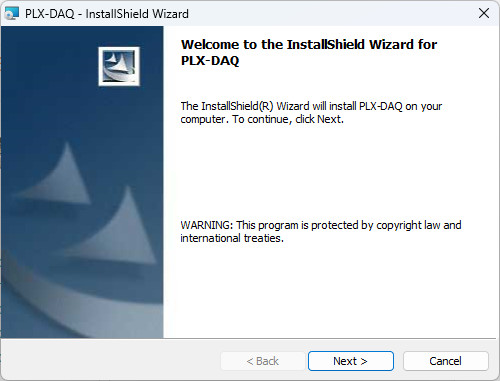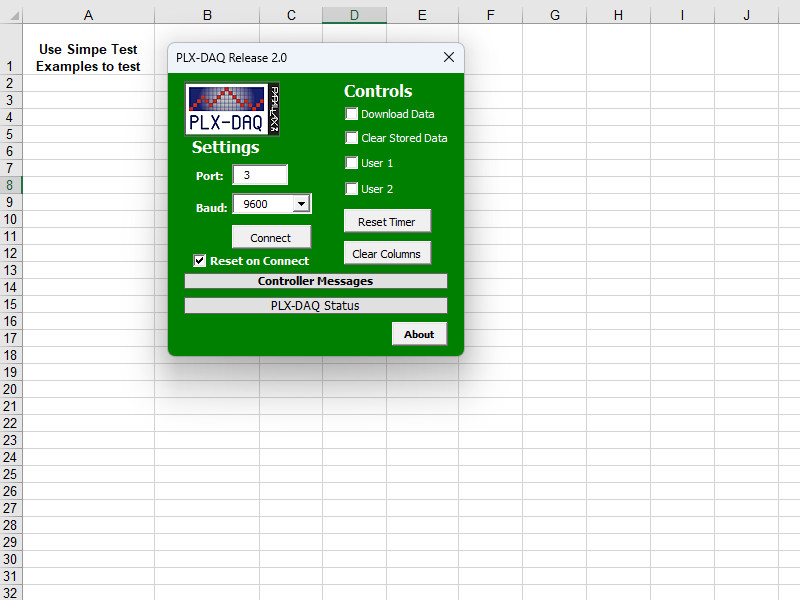PLX-DAQ โดย parallax.com เป็นโปรแกรมเสริมสำหรับบันทึกข้อมูลจากภายนอกลง Microsoft Excel, PLX-DAQ มีประโยชน์ในการรวบรวมข้อมูลจาก เซ็นเซอร์ ผ่าน Arduino ลงใน Excel
เริ่มต้นการใช้งาน
1. ทำการ Downloads ติดตั้ง PLX-DAQ >> https://www.parallax.com/downloads/plx-daq
PLX-DAQ-V2 สำหรับ Microsoft Excel 2010 https://forum.arduino.cc/index.php?action=dlattach;topic=437398.0;attach=188165

2. เปิดไฟล์ Excel ชื่อ PLX-DAQ_R2

3. เปิดใช้งานแมโครและ Active-X, Excel
4. Arduino Code (ต่อ Proximity Swith Pin D2) นับจำนวน
C
|
1 2 3 4 5 6 7 8 9 10 11 12 13 14 15 16 17 18 19 20 21 22 23 24 25 26 27 28 29 30 31 32 33 34 35 36 37 38 39 40 41 42 43 44 45 46 47 48 49 50 51 52 53 54 55 56 57 58 59 60 61 62 63 64 65 66 67 68 69 70 71 72 73 74 75 76 77 78 79 80 81 82 83 84 85 86 87 88 89 90 91 92 93 94 95 96 97 |
/* Debounce Each time the input pin goes from LOW to HIGH (e.g. because of a push-button press), the output pin is toggled from LOW to HIGH or HIGH to LOW. There's a minimum delay between toggles to debounce the circuit (i.e. to ignore noise). The circuit: - LED attached from pin 13 to ground - pushbutton attached from pin 2 to +5V - 10 kilohm resistor attached from pin 2 to ground - Note: On most Arduino boards, there is already an LED on the board connected to pin 13, so you don't need any extra components for this example. created 21 Nov 2006 by David A. Mellis modified 30 Aug 2011 by Limor Fried modified 28 Dec 2012 by Mike Walters modified 30 Aug 2016 by Arturo Guadalupi This example code is in the public domain. http://www.arduino.cc/en/Tutorial/Debounce */ // constants won't change. They're used here to set pin numbers: const int buttonPin = 2; // the number of the pushbutton pin const int ledPin = 13; // the number of the LED pin // Variables will change: int ledState = HIGH; // the current state of the output pin int buttonState; // the current reading from the input pin int lastButtonState = LOW; // the previous reading from the input pin // the following variables are unsigned longs because the time, measured in // milliseconds, will quickly become a bigger number than can be stored in an int. unsigned long lastDebounceTime = 0; // the last time the output pin was toggled unsigned long debounceDelay = 50; // the debounce time; increase if the output flickers unsigned long Count = 0; unsigned long int milli_time; //variable to hold the time void setup() { pinMode(buttonPin, INPUT); pinMode(ledPin, OUTPUT); pinMode(buttonPin, INPUT_PULLUP); Serial.begin(9600); Serial.println("CLEARDATA"); Serial.println("LABEL,Computer Time,Time (Milli Sec.),Count"); // set initial LED state digitalWrite(ledPin, ledState); } void loop() { // read the state of the switch into a local variable: int reading = digitalRead(buttonPin); // check to see if you just pressed the button // (i.e. the input went from LOW to HIGH), and you've waited long enough // since the last press to ignore any noise: // If the switch changed, due to noise or pressing: if (reading != lastButtonState) { // reset the debouncing timer lastDebounceTime = millis(); } if ((millis() - lastDebounceTime) > debounceDelay) { // whatever the reading is at, it's been there for longer than the debounce // delay, so take it as the actual current state: // if the button state has changed: if (reading != buttonState) { buttonState = reading; // only toggle the LED if the new button state is HIGH if (buttonState == HIGH) { ledState = !ledState; Count++; //Serial.print(Count); //Serial.println(" pcs"); Serial.print("DATA,TIME,"); Serial.print(milli_time); Serial.print(","); Serial.println(Count); } } } // set the LED: digitalWrite(ledPin, ledState); // save the reading. Next time through the loop, it'll be the lastButtonState: lastButtonState = reading; } |
4. เรียกใช้ PLX-DAQ
